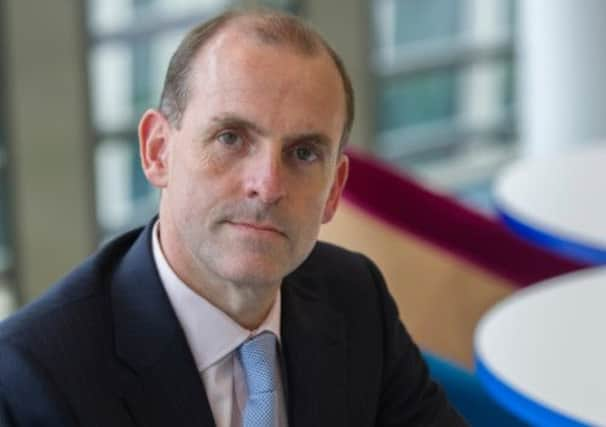Reborn TSB bank fights to keep its customers


The reborn bank, which employs 8,500 staff, is being spun off by Lloyds Banking Group with a £30 million marketing push to comply with EU rules on state aid.
All 185 Lloyds branches in Scotland, along with four Cheltenham & Gloucester sites, are being rebranded and five million customers switched to the new brand, but 4,000 have already said they want their accounts to remain with Lloyds.
Advertisement
Hide AdAdvertisement
Hide AdAnalysts said the former Virgin Money boss, now at the helm of a bank with 631 branches, is under pressure to hold on to customers and maintain a profitable business in the face of fierce high street competition.
Investec banking analyst Ian Gordon said: “One of TSB’s main challenges will be to demonstrate it can grow top-line revenues. The bigger high street players can sometimes offset lack of growth by cost-cutting, but TSB will not have this advantage.”
With a pledge to focus on individuals and local firms, TSB is keen make a clean break, free of the “legacy issues” such as payment protection insurance (PPI) mis-selling that haunt much of the sector, and Gordon said the bank, which will have about 7 per cent of the UK’s branch market, could be “the most credible challenger bank”.
While Ed Salvesen, deputy head of equity research at Brewin Dolphin, said the lack of PPI and interest rate swap mis-selling could make TSB an attractive investment prospect when it floats next year, low interest rates could make it difficult to launch competitive products while protecting its margins. He added: “If TSB can come out with good products and maintain its client base, I think there’s an attractive proposition because it’s low risk. As a potential investor, I’d be looking to see how it can maintain customer service.”
Gordon said customer retention would be a “key issue” for the bank, which is attempting to set itself apart in the sector by pledging to shun investment banking and overseas investments. Instead, all loans to mortgage customers or small businesses will be funded by customer deposits.
Lloyds, which is 39 per cent owned by the taxpayer, saw a £750m deal to sell the “project verde” business to Co-operative Bank collapse in April and is expected to float the business in the middle of next year.
The move marks the latest step on the road to recovery for Lloyds, which last month said it was ready for the UK government to begin selling down its stake.
A Treasury spokesman said: “The government has consistently said we have no set timetable or target share price for beginning the return of Lloyds to the private sector, and ensuring value for money will continue to be the overriding consideration for any sale.”
Advertisement
Hide AdAdvertisement
Hide AdIn 2002, Halifax – now part of the Lloyds group – found itself in hot water with window cleaners and taxi drivers after a flipchart in a Manchester branch inadvertently revealed it did not want to do business with start-ups and those who may be taking in large amounts of coins, but TSB insists its doors are open. A spokeswoman said: “Because we’re not doing big corporate banking, it really is small businesses – sole traders, corner shops, hairdressers – that are the focus of TSB.”
Workers are preparing to reveal the new bank’s signage tomorrow and the first “fully branded” TSB will open in Glasgow, when the wraps are taken off a former Lloyds branch on Sauchiehall Street.